At Okunoin, the most sacred place on Koyasan and the solemn path to Kobo Daishi’s mausoleum.
J
abara-mishi, the dragon’s belly, led me out of the Garan temple complex in Koyasan to Kongobun-ji temple. From there I headed toward Okunoin. I chose to walk the 2 kilometer distance. It gave me time to observe where people live and work as in any other town but also to breathe in the atmospheric spiritual nature of Koyasan. I walked past many temples too. There are 117 temples established in Koyasan.
In 2004, Koyasan and Okunoin were inscribed as a UNESCO World Heritage Site as part of the Sacred Sites and Pilgrimage Routes in the Kii Mountain Range.
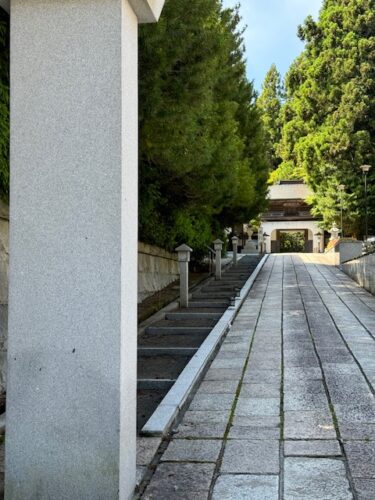
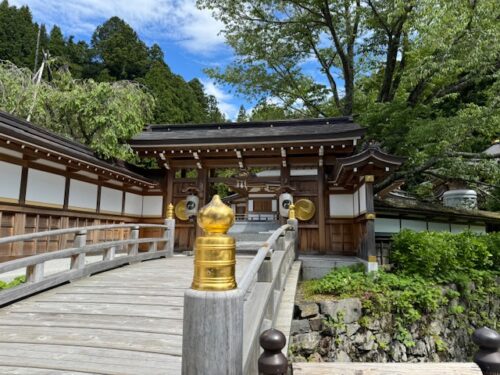
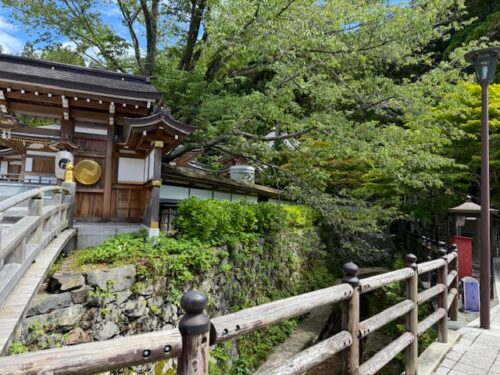
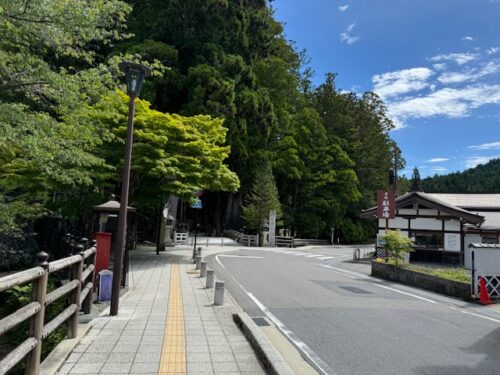
I am experiencing the same fluttering in my stomach. The walk, initially, seems unnecessarily long but it gave me an opportunity to appreciate the blessing it is to even be here.
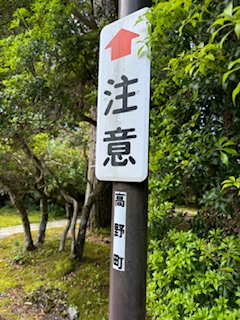
The Path to Okunoin
Kobo Daishi’s mausoleum is located in the far corner of the Okunoin or Inner Sanctuary, a huge cemetery of some 300,000 tombs in Koyasan. It is set in a forest of centuries-old Japanese cedar trees.
Once more, walk with me.
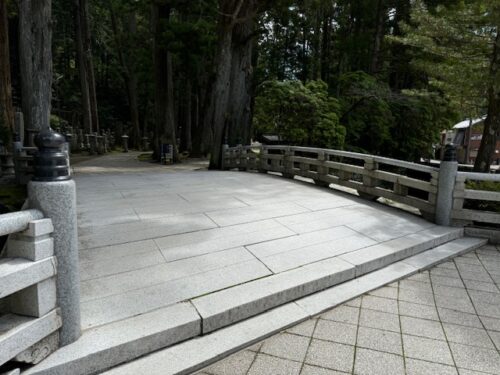
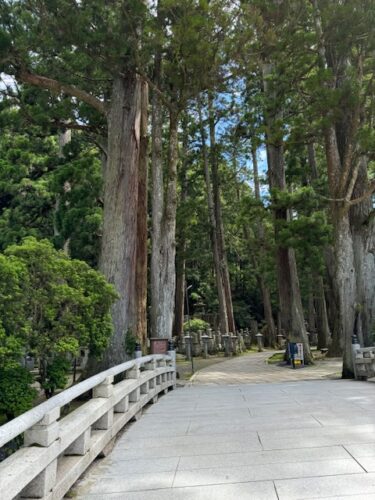
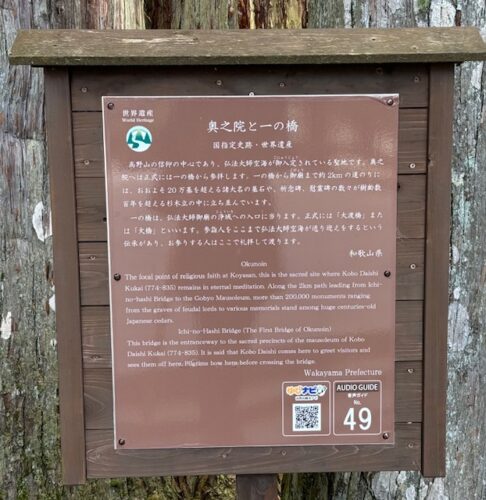
Since Kobo Daishi’s death, people have been buried here to be close to the master teacher. Tombs, mausoleums, and statues representing all levels of humanity are in the cemetery. Some tombstones are old and moss-covered while others are newly laid. The cemetery is the resting place of many of Kobo Daishi’s followers from his time to now.
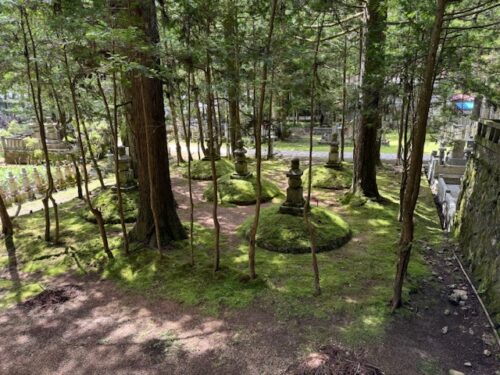
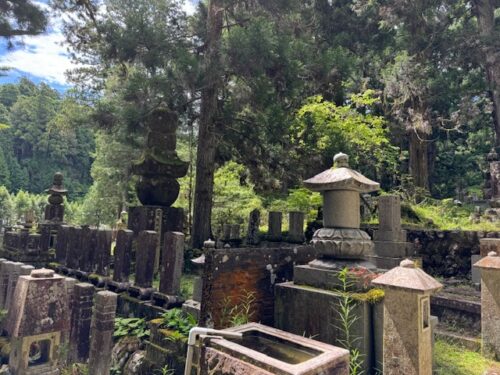
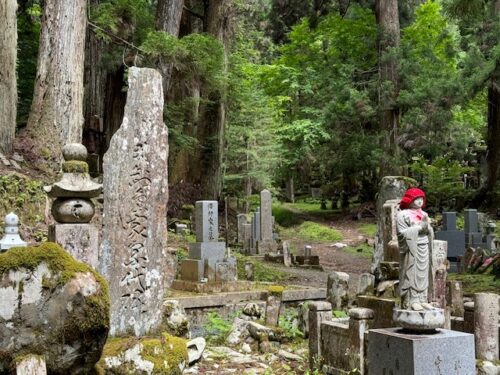
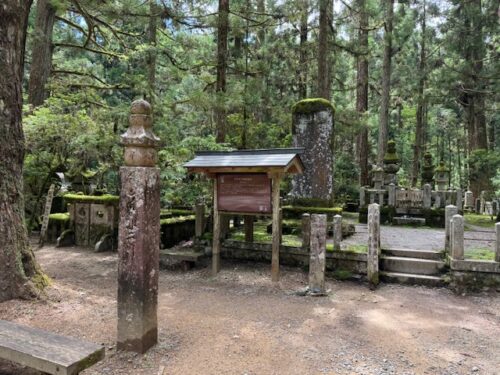
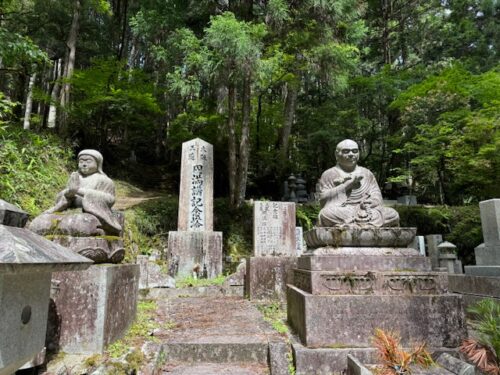
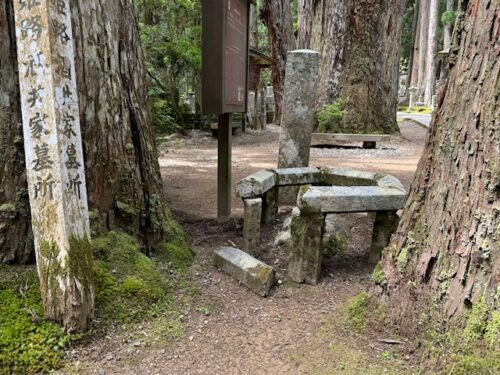
This is said to be where Kukai once sat.
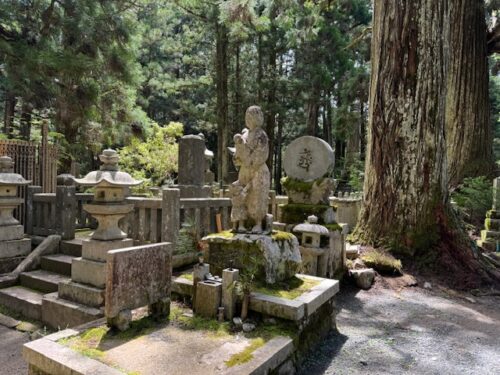
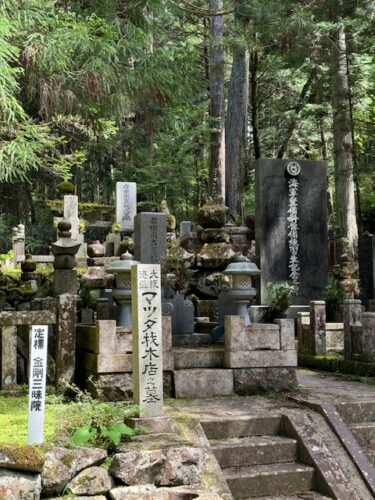
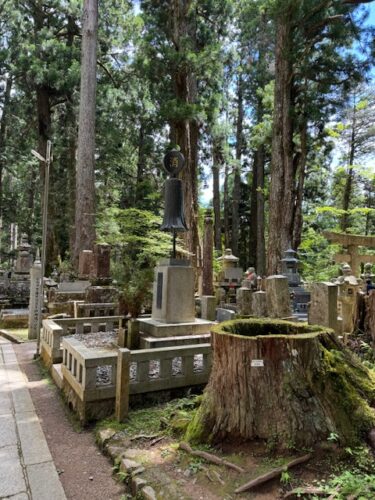
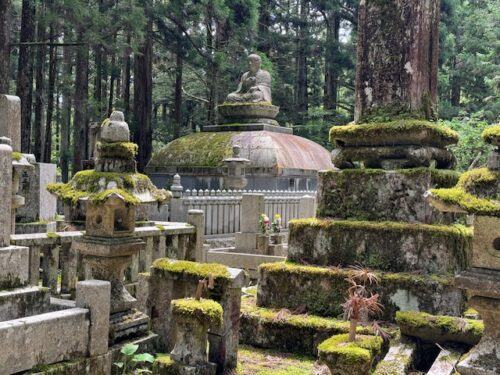
Tombs, memorials, and mausoleums of monks, feudal lords, samurai, politicians, major industrialists and corporate leaders, scientists, believers and practitioners are in this sacred space.
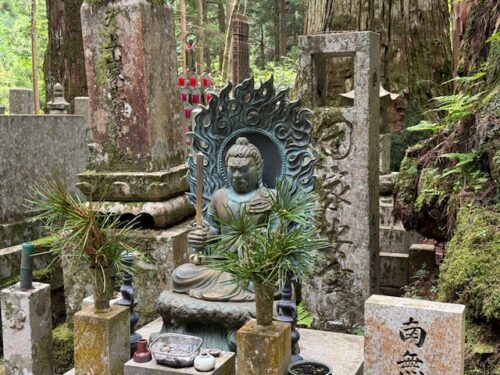
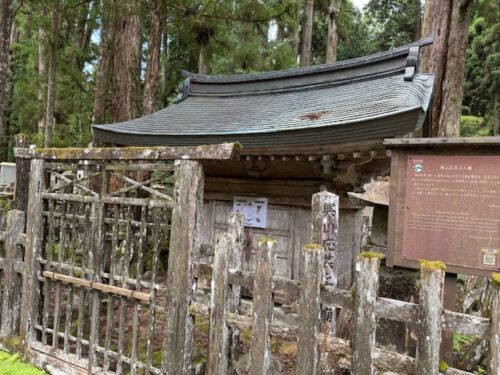
Mausoleum of Monk Ogo Shonin.
He prevented an attack on Koyasan by feudal commander, Toyotomi Hideyoshi, in the late 16th century. Ogo’s diplomacy caused the would-be attacker to become a major patron of Koyasan’s restoration.
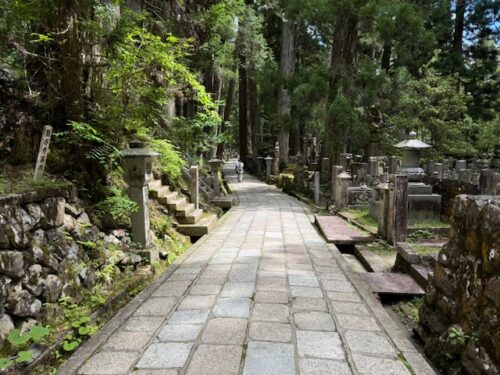
Purification station
The seven statues of Jizo close to Kobo Daishi’s mausoleum.
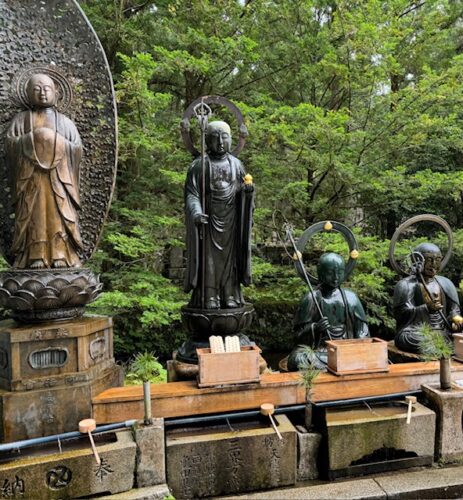
Prayers for the dead are accompanied by using the ladles to pour water over the statues as a sign of purification.
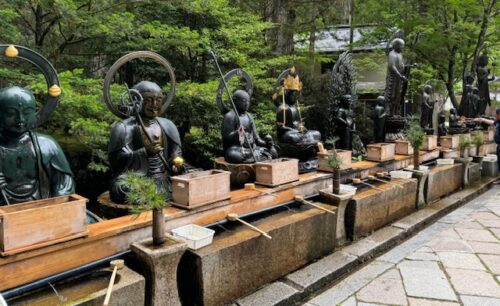
Here, close to the third bridge on the long promenade, visitors are reminded that the mausoleum and Okunoin is a sacred spot.
Photography is not permitted beyond this point. 👣
Torodo, Hall of 1,000 Lanterns
By now, all visitors walk the rest of the path in a kind of silence through the cemetery. Each bridge crossing brings us closer to the Torodo (Hall of 1,000 Lanterns).
The ceiling of the hall is covered with lighted lanterns. It looks mysterious and sanctified.
The Torodo (Okunoin Gokusho) is where visitors can get goshuin and amulets relating to Kobo Daishi. I got a stamp from a monk who congratulated me on completing my pilgrimage walk. Then he told me to use the exit to my left and walk to a spot just for ohenros.
I walked outside and saw a small shrine. It was for ohenros who completed the Shikoku 88 temple pilgrimage. Among the markings was an “88” on a small sign. The setting was unexpected and quite moving. Of course, I spent a little time there giving thanks for my safe journey, new friends, and all who shared their support and love.
Then I turned around.
Mausoleum of Kobo Daishi
In lieu of photos, let me try to explain the scene:
Behind the Torodo is the Gobyo, Kobo Daishi’s Mausoleum,
Kobo Daishi 774–835
also known as Kukai
Odaishi-sam, the Grand Master and Japanese Saint.
🕉️
This is one of the most sacred sites for followers of Kobo Daishi around Japan. They come to Okunoin to venerate their Japanese Saint.
Followers strongly believe that Kukai is still alive and in “eternal meditation”. He is said to have entered this state in order to save all of us through eternity. He remains at this site in a state of enlightenment – not yet in nirvana – ever praying for our salvation.
The air feels cool. It is dark in this few feet of space beween the mausoleum and veranda. There is an overwhelming sense of quiet and calm.
People come and go on the veranda directly behind the Torodo. Some are deep in prayer and some stand there for a long while. I did the same and experienced strong emotions.
Before I left, I walked around the mausoleum grounds. It is a peaceful place to think about Kobo Daishi.
Who was Kobo Daishi?
He was a monk and an artist, philosopher and poet, with scientific and engineering ambitions and close relations to Japan’s rulers. During his lifetime, he used all his skills in service of the people he met.
Born into an aristocratic family, he studied Chinese classic texts of Confucianism and Taoism. Soon he became interested in Buddhism, which had been recently introduced in Japan.
He travelled to Tang Dynasty China to learn to interpret a particular Buddhist text. After two difficult and busy years, Kukai returned to Japan as a Master in Esoteric Buddhism. He asked the Emperor to allow him to teach the new faith, Shingon Buddhism, and for land to establish a monastery.
As Kukai, he travelled all over Japan looking for this place. He founded Koyasan on an isolated mountain plateau said to be encircled by two mountain chains of eight peaks each. The place was thought to represent a Lotus, an important Buddhist symbol.
This place is now known as Koyasan:
▪️Shingon headquarters is Kongobu-ji temple.
▪️The Danjo Garan, is a compound of twenty temples, halls and pagodas set in a forest of cedar trees.
It is the ground where Kobo Daishi founded his retreat in the early 9th century and where he gave his first and last lecture.
Kukai spent his final years there writing and teaching. He passed away in 835 after having initiated some disciples who continued the teachings of Shingon Buddhism.
▪️Okunoin cemetery is the most sacred place on Koyasan,
Do not seek to follow in the footsteps of the men of old; seek what they sought.
– Kukai
🕉️
Back to town center
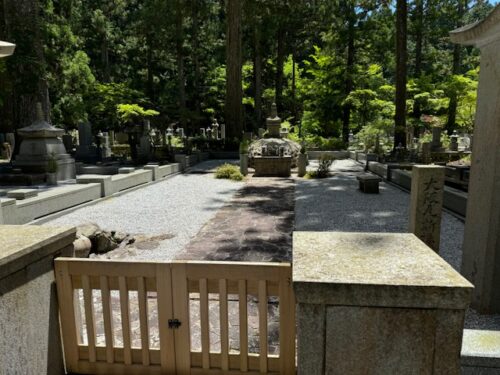
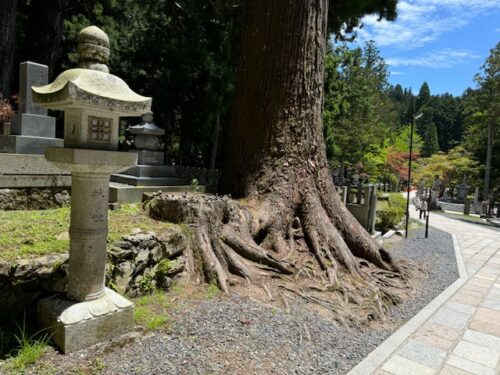
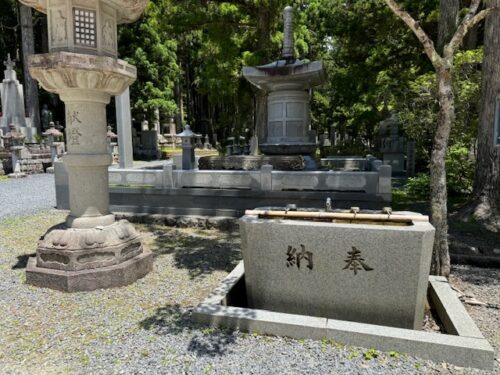
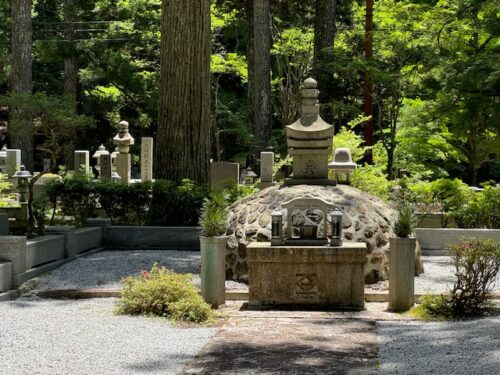
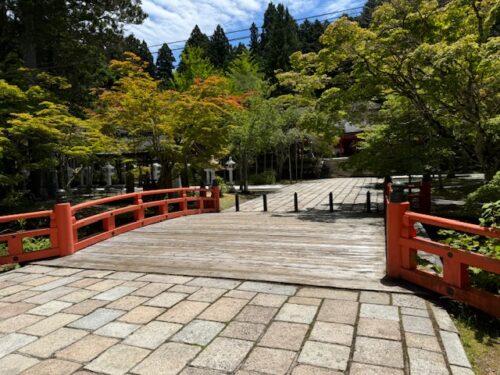
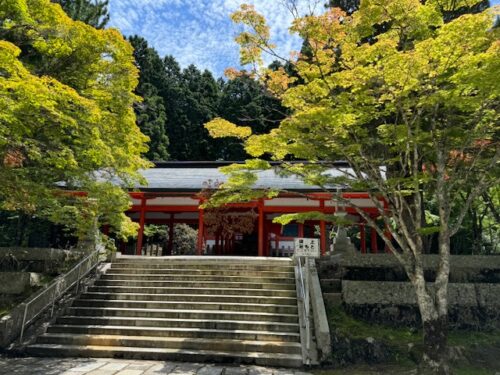
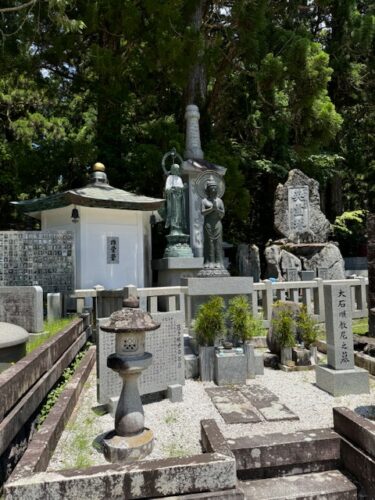
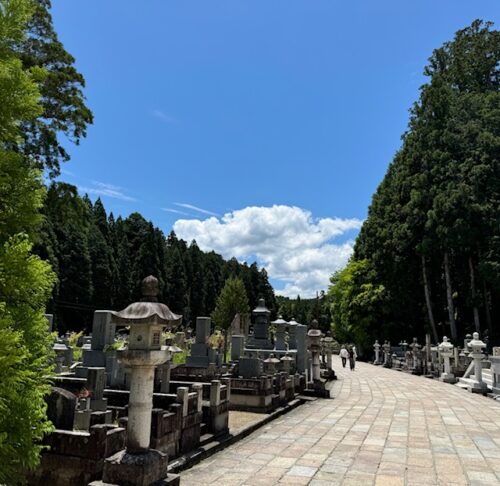
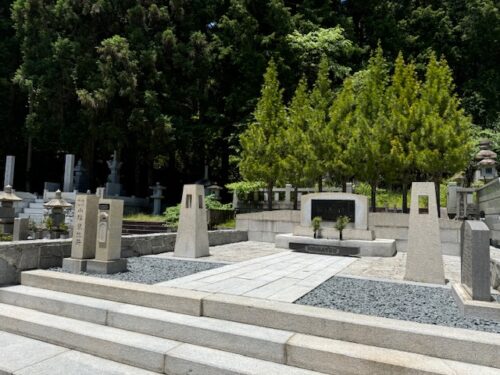
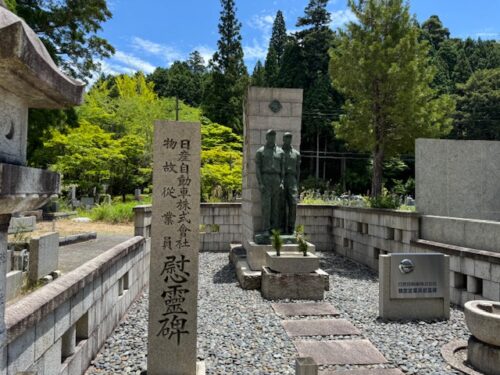
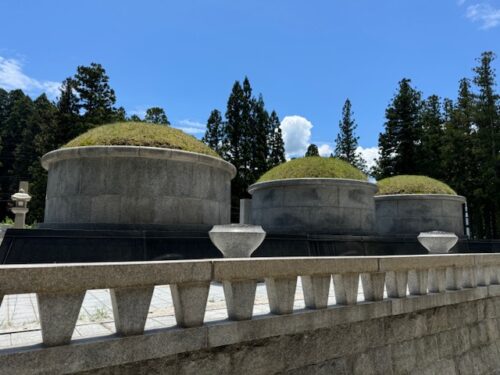
Chance encounter
Guess who I ran into when I got back to town? I spotted my bus mate from Shikoku whose grandmother is buried in Koyasan.
When we went our separate ways, I did not expect to see her again. I waved at her and she crossed the street to meet me. We hugged each other and walked for a short distance. By now, it was lunchtime, so we decided to find something to eat. A museum dining room that seemed to be popular was steps away. We agreed to get lunch there.
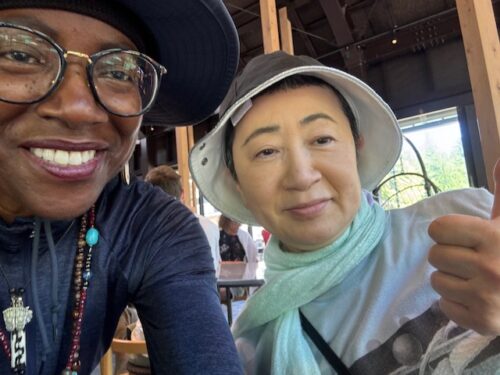
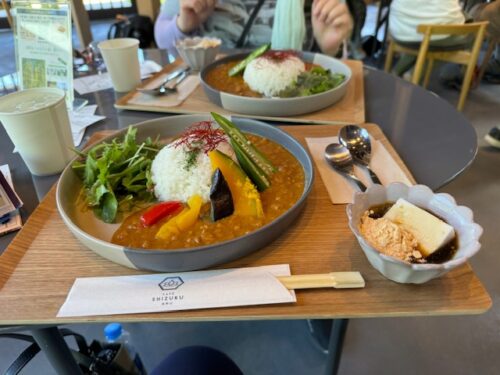
And talk.
After lunch, we hugged each other. She headed toward the nearby bus stop to return home. I had a few more places to visit before leaving. I kept thinking that our meeting once more was not by chance but somehow meant to be.
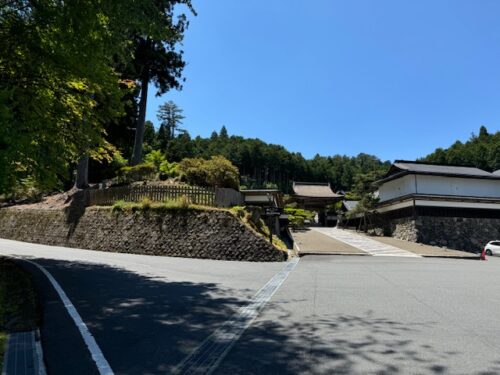
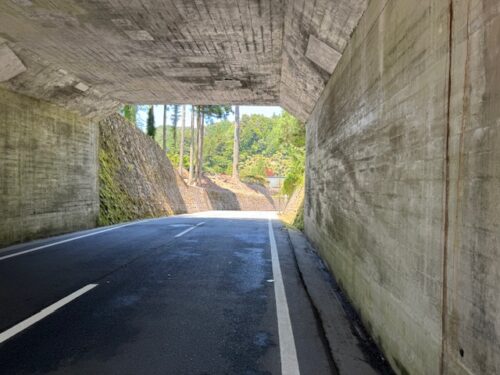
The Daimon (Great Gate)
The gate is designated as an important entrance to the western side of Koyasan. At one time there were nine different paths or entrances on Mt Koya to the town.
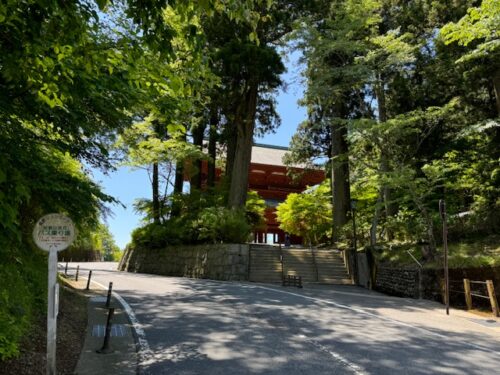
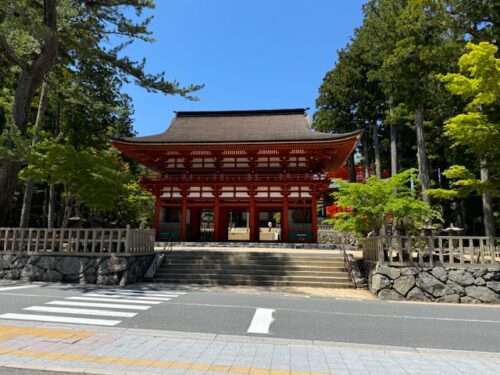
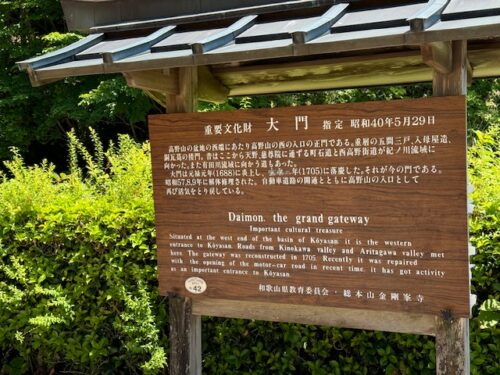
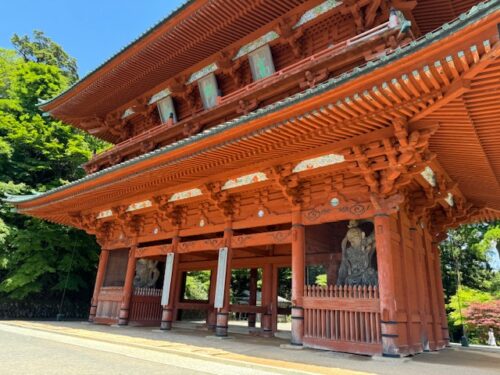
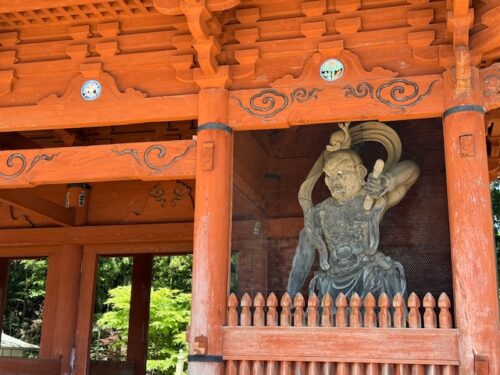
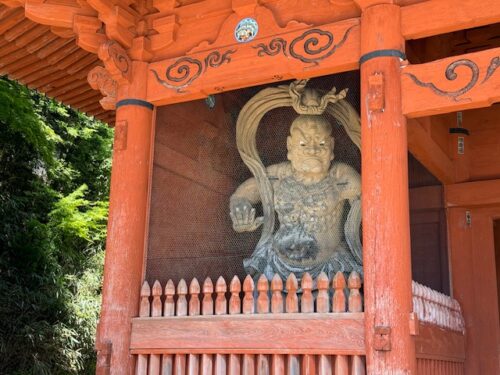
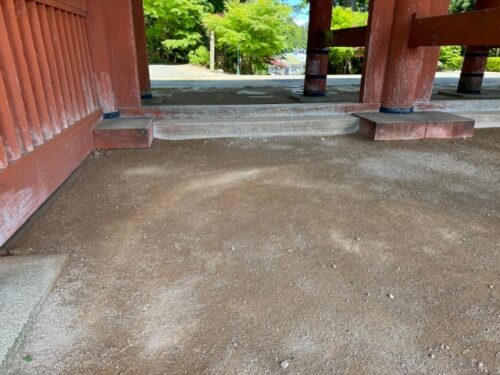
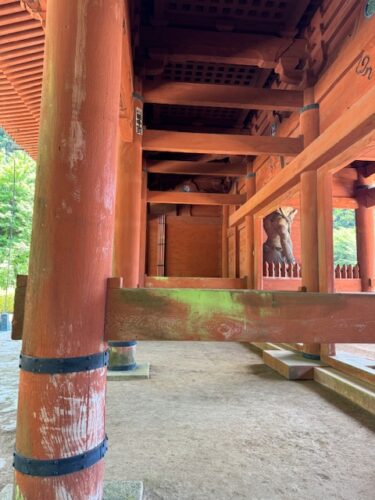
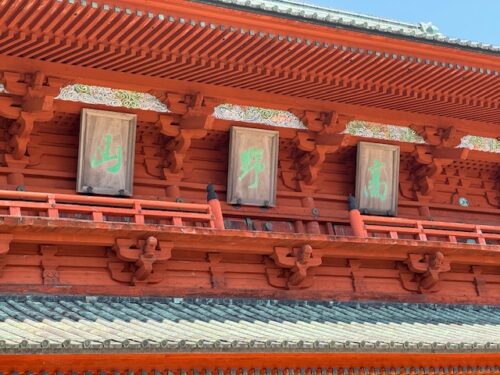
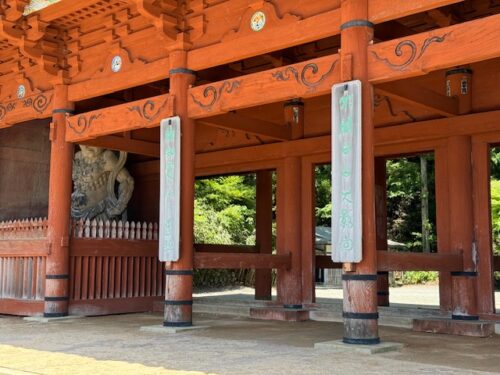
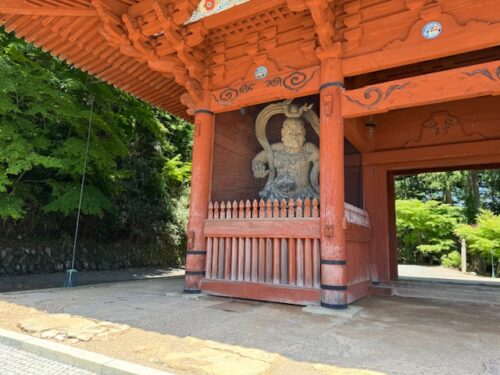
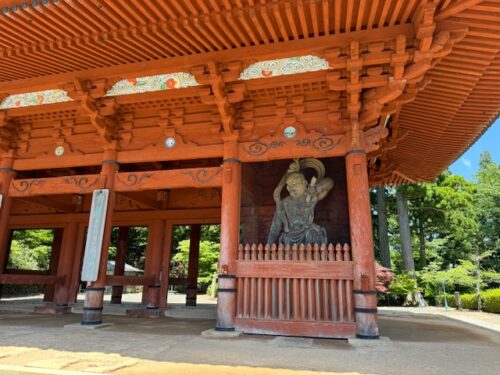
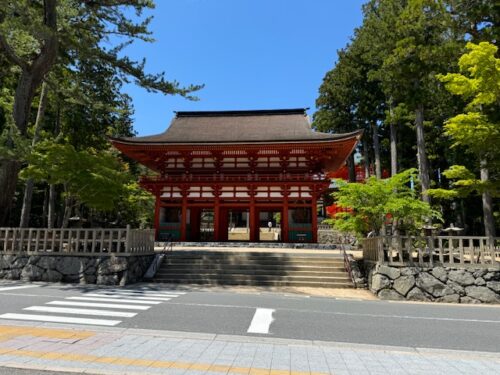
Gone, Gone, Gone
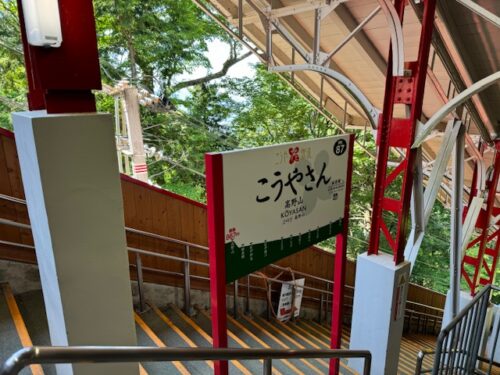
Ichigo, ichie. You hear that sometimes on the pilgrimage path. It means one time, one encounter. It is not exclusive, however, to my time in Japan. Every human on earth must appreciate almost every moment in this way, because we will not experience it ever again.
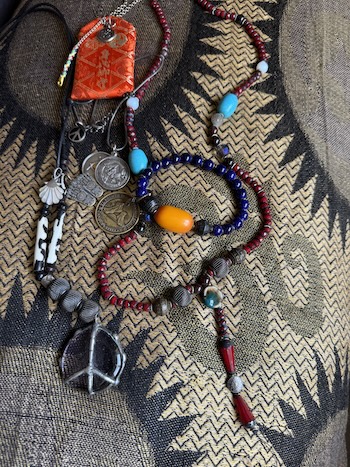
Well, I am officially finished with my pilgrimage in Japan. There are a few more places I want to visit before I return home.
A little more to come
I sincerely hope that you endured and enjoyed my account of my wanderings around Shikoku and neighboring islands. From this point on, I am pursuing ichigo, ichie to the very minute I leave Japan!
I will post what I see and do.
See you next time.
Baadaye and Mate ne
Shirley J 🕉️
This and several posts this summer chronicled my pilgrimage in Japan where I walked the 1200 kilometer-long Shikoku 88 temple pilgrimage and beyond. Read my announcement here.

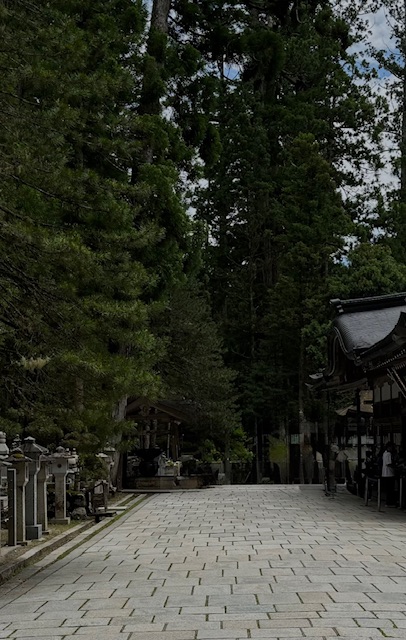
2 thoughts on “🌸 Noire Henro san: Koyasan – Pt 2”
117 temples. You could spend another year just visiting them!
“Do not seek to follow in the footsteps of the men of old; seek what they sought.” That sounds like good advice, especially having finished your pilgrimage as you try to figure what’s next.
Again, thanks for bringing us along on the journey!
Thank you for walking along. Koyasan is all about the temples and cemetery. It is the end and the beginning! What follows is… 😉
Comments are closed.